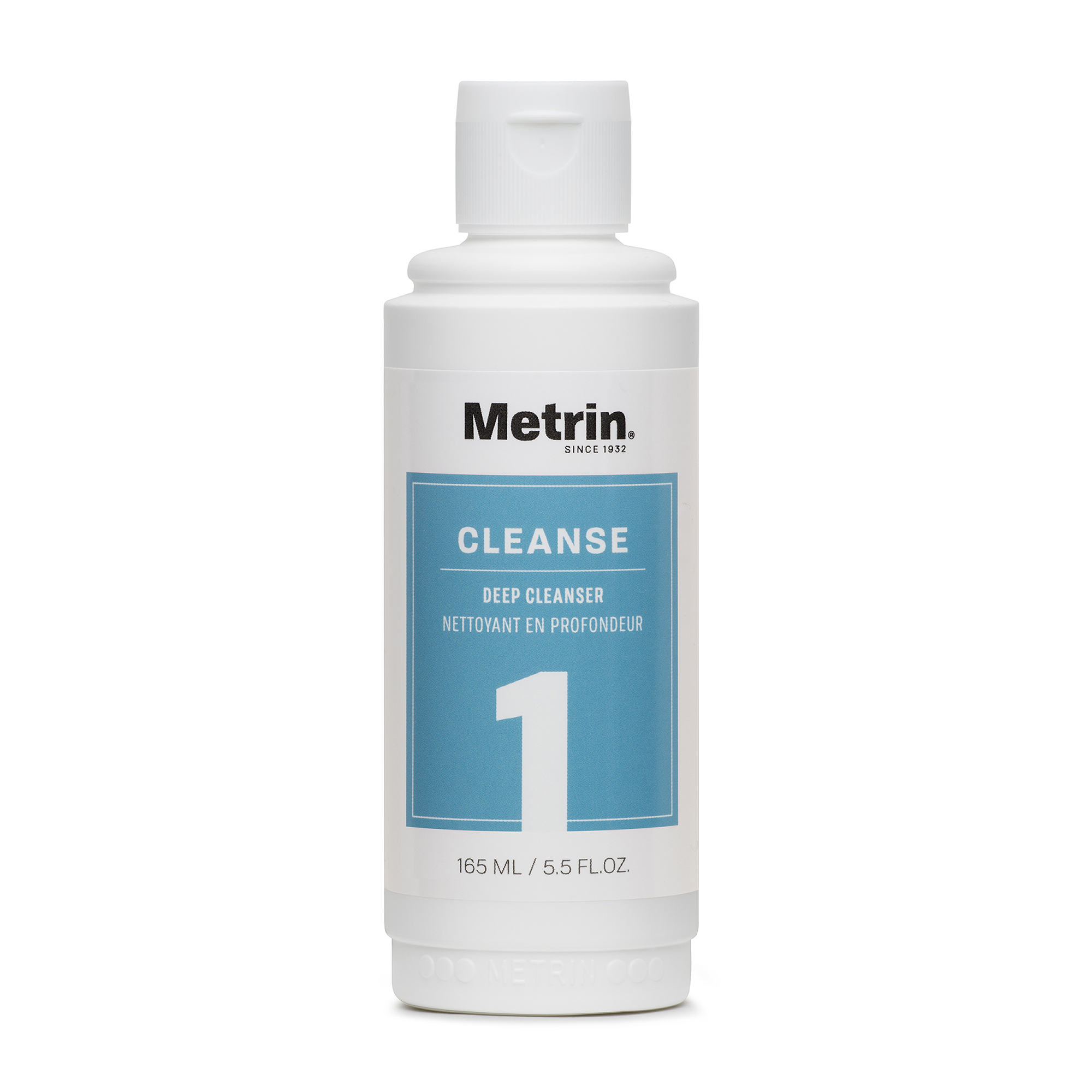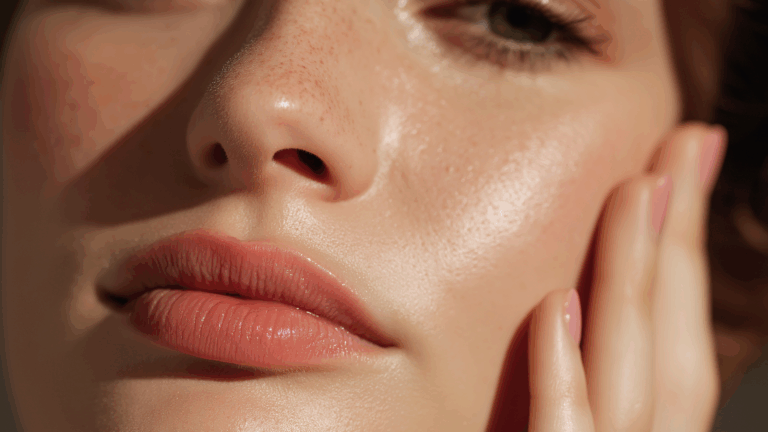What Are Essential Fatty Acids and How They Transform Your Skin
Beyond Moisturizers — Why EFAs Matter
We often hear about hydration, vitamins, and exfoliants in skincare. But essential fatty acids (EFAs) are the quiet heroes that hold everything together: your barrier, your glow, your skin’s ability to resist aging.
As we age, natural levels of EFAs decline, which compromises barrier integrity, increases dryness, and accelerates fine lines. This blog will explain what are essential fatty acids, how deficiency affects skin, and how Metrin integrates them into your daily routine—without adding complexity.
What Are Essential Fatty Acids?
In biochemistry, EFAs are lipids the body cannot make on its own—they must be consumed or applied. Specifically, humans require two: linoleic acid (omega-6) and alpha-linolenic acid (omega-3).
- Linoleic acid (LA) is central to the skin’s lipid barrier and structural health.
Because human skin lacks strong enzymatic machinery to convert LA and ALA into longer-chain derivatives (e.g. GLA, EPA), applying them directly is crucial.
Why EFAs Are Essential for Skin Health
1. Strengthening the Lipid Barrier & Reducing Water Loss
EFAs form part of the lamellar (layered) structure between skin cells, helping prevent transepidermal water loss (TEWL). Deficiency in EFAs is strongly associated with barrier breakdown and dryness.
2. Calming Inflammation & Supporting Skin Repair
Omega-3 (ALA) competes with proinflammatory pathways, lowering cytokine production and reducing redness or irritation.
Linoleic acid (LA) metabolites also modulate inflammation and help the skin heal.
3. Improving Texture, Elasticity & Resilience
When EFAs rebuild and support the barrier, skin becomes smoother, more supple, and better able to resist creasing and mechanical stress.
4. Supporting Acne-Prone Skin
Some studies show that acne sufferers tend to have lower levels of linoleic acid in their skin lipids. Topical LA may help balance sebum composition and reduce comedone formation.
5. Protecting Against Environmental Damage
A well-nourished barrier with EFAs is more resilient to UV, pollution, and oxidation stress, reducing the risk of premature aging.
Signs Your Skin Is Lacking EFAs
- Persistent tightness or dryness even with moisturizers
- Rough or flaky patches
- Redness, sensitivity, or frequent irritation
- Fine lines that deepen quickly
- Dull, uneven complexion
- Compromised barrier feeling (e.g. sting after cleansing)
If any of these sound familiar, it’s a signal your skin may benefit from restoring its EFA balance.
How Metrin Delivers EFAs Seamlessly
Rather than asking you to layer extra oils or supplements, Metrin integrates EFAs into your daily skincare system. Here’s how:
- Cold-pressed, organic high oleic sunflower oil (rich in linoleic acid) is included in Steps 1, 3, and 5.
- Systemic layering ensures consistent, gentle delivery—morning and night—so skin receives EFAs over time.
- Supportive botanicals like aloe vera and soy protein aid absorption and reduce irritation around the lipid replenishment process.
What Research Says About EFAs & Skin
- Topical sunflower oil (rich in LA) has reversed signs of EFA deficiency in human skin models—improving TEWL and reducing scaliness.
- EFAs are foundational in forming eicosanoids—signaling molecules that affect inflammation, healing, and barrier integrity.
- In deficiency, skin shows hyperproliferation, dermatitis, and barrier compromise—underscoring how essential these lipids are.
These findings confirm the logic behind including EFAs in clinical skincare for long-term skin health.
EFAs vs Other Oils: What Makes Them Different
| Oil / Lipid | Comedogenic Risk | Linoleic Acid Content | Barrier Impact |
|---|---|---|---|
| Coconut Oil | High | ~2–3% | Primarily occlusive, may clog pores |
| Olive Oil | Moderate | ~10% | May disrupt barrier with long-term use |
| Sunflower Oil (used in Metrin) | Low | ~65–70% | Supports barrier repair and resilience |
Sunflower oil, when used in EFA-rich formulations, offers a unique blend of barrier support without heaviness or clogging.
When to Start Prioritizing EFAs
You don’t have to wait until visible signs of aging appear. In your 20s, combining hydration + EFAs lays down a strong barrier foundation. In your 30s and beyond, EFA support becomes increasingly critical to compensate for declining natural lipid production and to keep skin resilient against stressors.
FAQs: What Are Essential Fatty Acids & Skin
Q: Can EFAs be replaced by vitamins or ceramides?
A: No. While vitamins and ceramides support skin, EFAs are structural lipids the skin must have. They integrate with ceramides and cholesterol to form the barrier matrix.
Q: Are EFAs the same as “oil” in skincare?
A: Not always. The term “oil” is broad. EFAs refer specifically to omega-3 and omega-6 lipids that skin cannot synthesize—many oils are supportive carriers, but their EFA content matters.
Q: Will using EFA-rich oils clog my pores?
A: Oils high in linoleic acid (like sunflower) are low in comedogenic risk and often help rebalance clogged or acne-prone skin.
Q: Can diet alone supply enough EFAs for healthy skin?
A: While diet is important, the skin’s barrier benefits from local (topical) delivery. The epidermis lacks efficient conversion enzymes, so direct topical application is more reliable.
Q: How long before I see improvement?
A: Many users report improved softness and less flaking within weeks. Barrier strength and visible resilience evolve with consistent use over months.ealthy, resilient skin is universal.
Ready to restore your glow?
- Take Our Skin Consultation Questionnaire
Discover your skin’s needs and get tailored guidance.💌 Take the FREE Skin Care Questionnaire and we’ll help you get started. - Start with the Metrin Skincare System for Her
Our complete 5-step system is designed for long-term results, not short-lived “glow-ups.”👉 Shop the Metrin Skincare System for Her
References
- Wang, X., et al. (2024). Linoleic acid and the skin barrier: A comprehensive review. Journal of Investigative Dermatology (reviews), detailing linoleic acid’s role in maintaining hydration, reducing inflammation, and strengthening the lipid barrier (PMC).
- Al‑Niaimi, F. (2017). Topical vitamin C is the primary replenisher of vitamin E and works synergistically in protection against oxidative damage. Journal of Clinical and Aesthetic Dermatology, demonstrating that vitamin C replenishes vitamin E and enhances antioxidant efficacy (PMC).
- Darr, D., et al. (1996). Vitamin C and E enhance photoprotection and UVB sunscreen effectiveness in swine skin. Acta Dermato‑Venereologica, showing greater UV protection when vitamins C and E are combined with sunscreen (PubMed).
- Pullar, J. M., et al. (2017). Roles of vitamin C in skin health. Nutrients, affirming vitamin C’s function in collagen synthesis and antioxidant defense against photo-aging (MDPI).
- Lin, T. K., et al. (2017). Anti‑inflammatory and barrier repair benefits of topical sunflower seed oil. PLoS ONE, illustrating sunflower oil’s high linoleic acid content and how it supports skin barrier repair without causing irritation (PMC).













